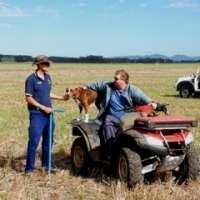Many surface soils in Western Australia are already storing as much carbon as they can, according to research at The University of Western Australia and in collaboration with the Department of Agriculture and Food WA (DAFWA) and grower groups.
The research found that in agricultural regions in the southwest of Western Australia, the 0-10cm layer of soil is often storing as much carbon as it can under the current climate and management practices.
Changes to management practices that increase organic carbon in soil may offset greenhouse gas emissions and can also improve soil fertility and plant growth.
"Although our research showed that many surface soils are saturated with carbon, this isn't the end of the line for soil carbon storage," said Professor Daniel Murphy, who led the research with funding from the Australian Government's Climate Change Research Program and the Grains Research and Development Corporation.
"There is potential for soils between 10 and 30cm below ground to store more carbon under certain conditions," Professor Murphy said. "Our findings suggest that these layers could theoretically store twice as much carbon as they are currently. We need to investigate management practices that can increase the amount of carbon stored in soil at this depth."
A new research project at UWA will assess the potential of existing and emerging management practices to increase carbon storage at these depths under funding from the Australian Government's Carbon Farming Futures - Filling the Research Gap Program.
"The aim of the project is to provide farmers with options to overcome constraints to carbon storage in WA agricultural soils," said Associate Professor Deirdre Gleeson, who is leading the team of researchers from UWA, DAFWA, CSIRO in Adelaide and La Trobe University in Melbourne.
"We will determine whether storage of soil carbon at depth in WA agricultural soils can be increased by claying, liming or one-off soil inversion using mouldboard ploughing and spading," Associate Professor Gleeson said.
For further information, see "Organic Carbon Storage in Western Australian Soils."
Provided by University of Western Australia






















